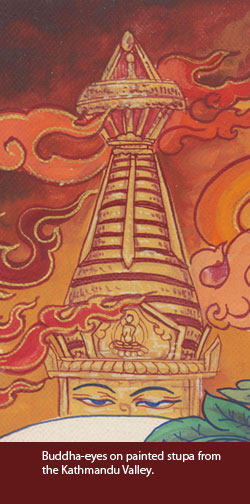One striking and distinctively Buddhist architectural form is the relic monument called stupa or caitya in Sanskrit. Caityas began in India as hemispherical structures of brick or stone housing texts or other relics of the Buddha. In Southeast Asia, tat or that take on streamlined shapes with elegant spires. In Japan, multi-layered pagoda structures are still stupas in concept, different as the external appearance may be. Caityas are the sites for everyday devotions and the celebration of auspicious occasions, and they range in size from colossal to tiny.
Though the form of the caitya is simple, the meanings attributed to it are many. The Buddha’s living presence is invoked by the suggestion of relics housed within the caitya. Its form is also likened to that of the meditating Buddha. The regular geometric ground plans of all these structures evoke mandalas, two-dimensional models of universal order. Mandalas themselves can be seen as homologues of the human body. Buddhist thought sets out formal correspondences among humans, buildings, and paintings—not to mention abstract principles—in its notions of encompassing order.

